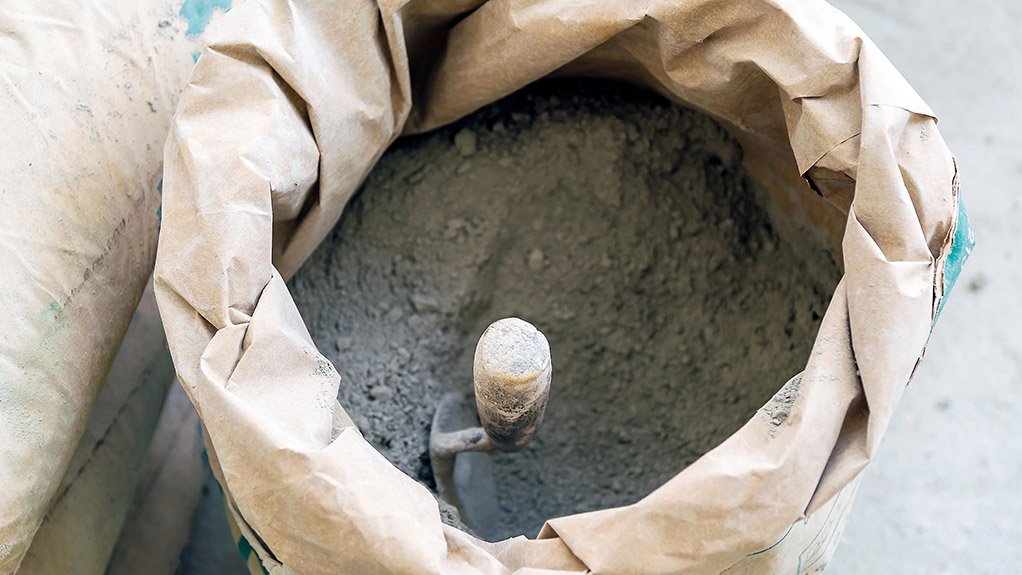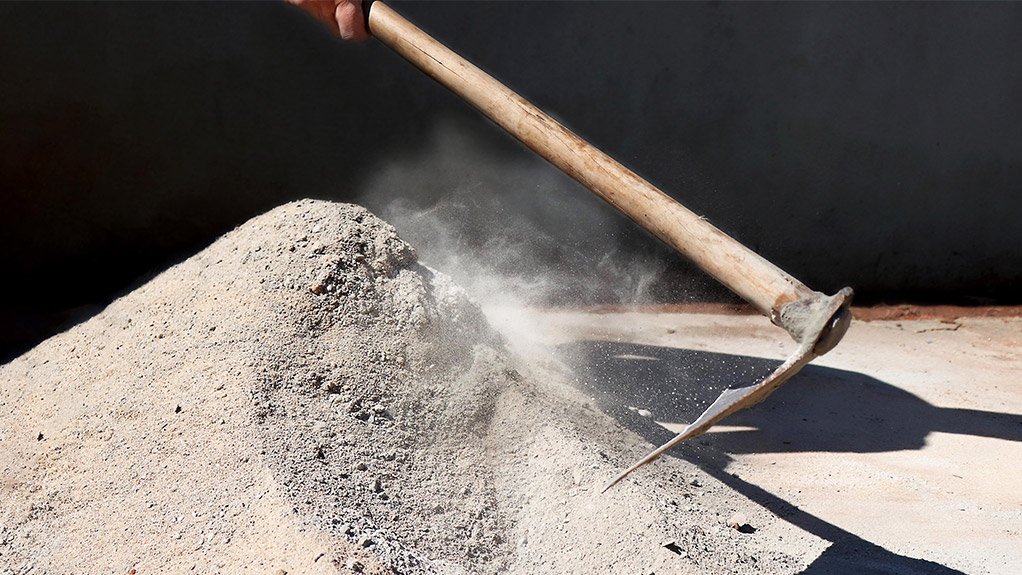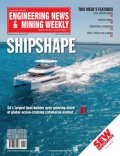Guidelines On Using Cement And Concrete Safely And Sensibly
This article has been supplied as a media statement and is not written by Creamer Media. It may be available only for a limited time on this website.
Concrete is the world’s most widely used building material, and workers in every sector of the construction and precasting industries, as well as DIY enthusiasts, handle portland cement and wet concrete every day. As with most materials, there are potential risks involved in handling or working with portland cement or mixes made using portland cement.
John Roxburgh, lecturer at The Concrete Institute’s School of Concrete Technology, here provides some guidelines on mixing and using concrete in a safe manner:
The composition of portland cement is such that when dry cement is exposed to water a chemical reaction called hydration takes place, resulting in an alkaline mixture that can be caustic. This could cause alkali burns on the skin so safety measures should be observed to prevent fresh concrete or its bleed water coming into contact with the skin.
Roughness and dryness of the hands is a typical result of exposure to cement so to safeguard against accidental skin exposure, appropriate protective equipment is strongly recommended such as the wearing of impermeable gauntlet type rubber gloves and high length rubber boots. Trousers should overlap the boots rather than be tucked into them.
It is recommended that hydrophobic alkali-resistant barrier creams should be applied to hands and any areas of skin likely to be in contact with fresh concrete. Ordinary barrier creams are unlikely to offer adequate protection. Furthermore, these precautions may be ineffective if the skin itself is not clean and free of concrete residue. Even a tiny trace of cement dust remaining in contact with wet skin could burn the skin. For this reason, some authorities recommend the use of disposable gloves and discourage reusable gloves.
Other organic tissue (for example, mucous membrane) can also be attacked by strong alkalis leading to burns that can sometimes be severe.
The use of cement inevitably creates dust, such as from operations such as handling aggregates or cutting concrete. The dust becomes suspended in the air in the working area and inhaled by every person on site, potentially causing irritation of the nose and throat, as well as eyes. Therefore, every attempt should be made to keep airborne cement dust to a minimum but should this be impractical, the use of goggles and dust masks is strongly recommended.
Many of the aggregates used in concrete have high silica contents. The fine silica dusts created when crushing or handling these aggregates could cause lung problems, and precautions should be observed to avoid breathing in such dusts.
Dust from demolishing or cutting hardened concrete may contain unhydrated cement and could cause respiratory problems. In addition, if the coarse or fine aggregate used in making the concrete contains crystalline silica, the inhalation of these fine silica particles could expose workers to the risk of developing the occupational lung disease, silicosis. A concerted effort should be made to avoid generating such dusts but if not possible, the use of suitable respiratory protective equipment such as dust masks is recommended.
Particular care should be taken to ensure that:
Normal and protective clothing does not become soaked with wet concrete or concrete fluids as this could result in exposure over an extended period, resulting in tissue damage that can be particularly severe and even disfiguring; and
Workers do not kneel on fresh concrete during placing, compacting and finishing operations. If kneeling is unavoidable, thick waterproof kneepads should be worn and a kneeling board used to prevent the pads sinking into the fresh concrete.
Protective clothing should also be regularly and properly washed to keep it clean and free of concrete. Any areas that have been accidentally splashed with wet concrete should be rinsed clean with water as soon as possible.
For further information on safety precautions on site, visit www.theconcreteinstute.org.za or email info@theconcreteinstitute.org.za.
Comments
Announcements
What's On
Subscribe to improve your user experience...
Option 1 (equivalent of R125 a month):
Receive a weekly copy of Creamer Media's Engineering News & Mining Weekly magazine
(print copy for those in South Africa and e-magazine for those outside of South Africa)
Receive daily email newsletters
Access to full search results
Access archive of magazine back copies
Access to Projects in Progress
Access to ONE Research Report of your choice in PDF format
Option 2 (equivalent of R375 a month):
All benefits from Option 1
PLUS
Access to Creamer Media's Research Channel Africa for ALL Research Reports, in PDF format, on various industrial and mining sectors
including Electricity; Water; Energy Transition; Hydrogen; Roads, Rail and Ports; Coal; Gold; Platinum; Battery Metals; etc.
Already a subscriber?
Forgotten your password?
Receive weekly copy of Creamer Media's Engineering News & Mining Weekly magazine (print copy for those in South Africa and e-magazine for those outside of South Africa)
➕
Recieve daily email newsletters
➕
Access to full search results
➕
Access archive of magazine back copies
➕
Access to Projects in Progress
➕
Access to ONE Research Report of your choice in PDF format
RESEARCH CHANNEL AFRICA
R4500 (equivalent of R375 a month)
SUBSCRIBEAll benefits from Option 1
➕
Access to Creamer Media's Research Channel Africa for ALL Research Reports on various industrial and mining sectors, in PDF format, including on:
Electricity
➕
Water
➕
Energy Transition
➕
Hydrogen
➕
Roads, Rail and Ports
➕
Coal
➕
Gold
➕
Platinum
➕
Battery Metals
➕
etc.
Receive all benefits from Option 1 or Option 2 delivered to numerous people at your company
➕
Multiple User names and Passwords for simultaneous log-ins
➕
Intranet integration access to all in your organisation
























